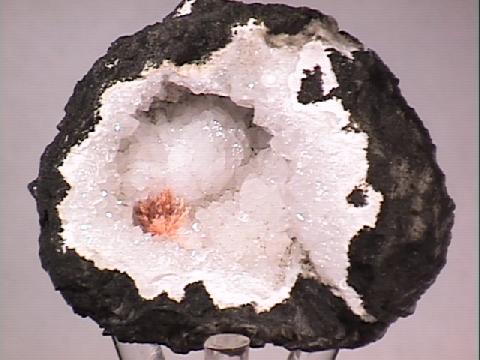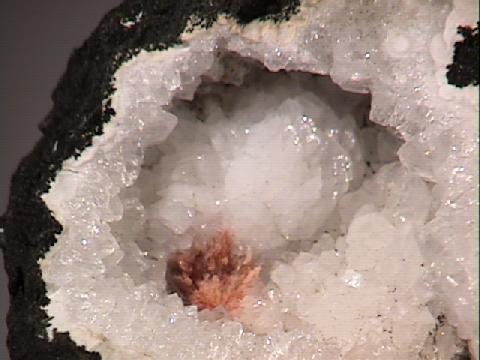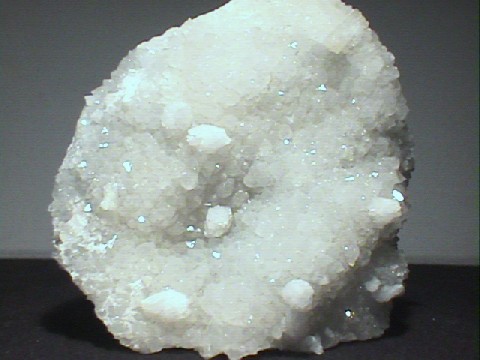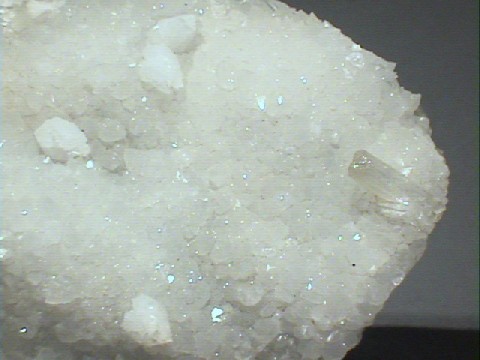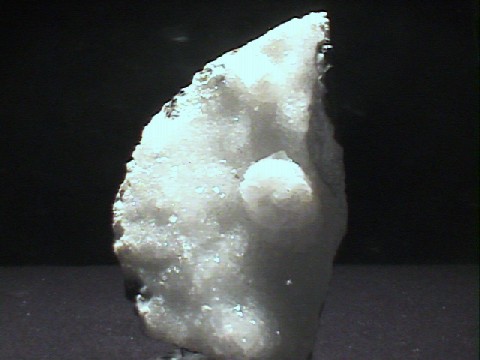 THE MINERAL GOOSECREEKITE
THE MINERAL GOOSECREEKITE
- Chemistry: CaAl2Si6O16 - 5H2O, Hydrated calcium aluminum silicate.
- Class: Silicates
- Subclass: Tektosilicates
- Group: Zeolites
- Uses: Mineral specimen and chemical filter.
Specimens
Zeolites are known to have an openness about their structure that allows large ions and molecules to reside and actually move around inside the overall framework. The structure actually contains open channels that allow water and large ions to travel into and out of the crystal structure. The size of these channels controls the size of the molecules or ions and therefore a zeolite can act as a chemical sieve, allowing some ions to pass through while blocking others.
PHYSICAL CHARACTERISTICS:
- Color is clear and/or white.
- Luster is vitreous.
- Transparency: Crystals are transparent to translucent.
- Crystal System is monoclinic.
- Crystal Habits include prismatic, irregular and blocky crystals. Twinning is common and results in parallel growth.
- Cleavage is poor.
- Fracture is uneven.
- Hardness is 4 - 4.5
- Specific Gravity is approximately 2.4 - 2.5 (light).
- Streak is white.
- Associated Minerals are quartz, calcite, epistilbite, heulandite, stilbite and other zeolites.
- Notable Occurrences include Poona, India and Luck Goose Creek Quarry in Loudon Co., Virginia.
- Best Field Indicators are crystal habit, density, hardness and associations.

